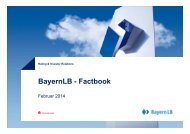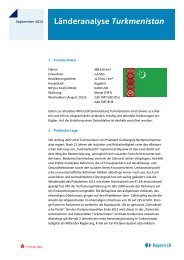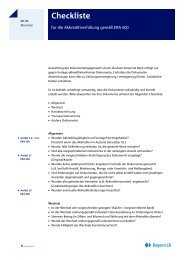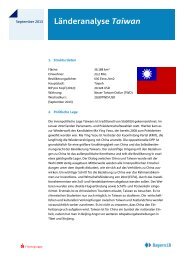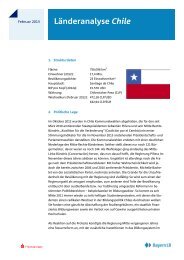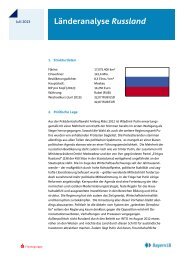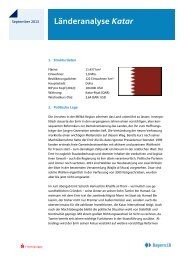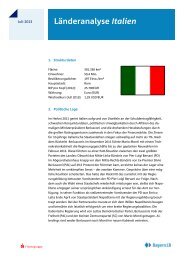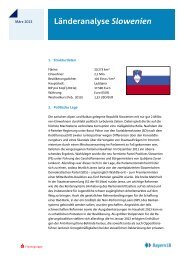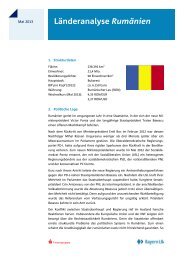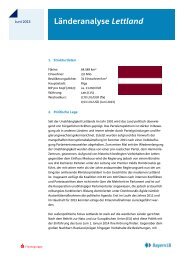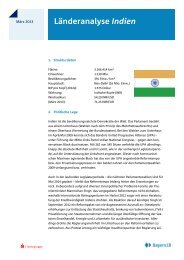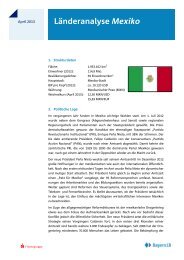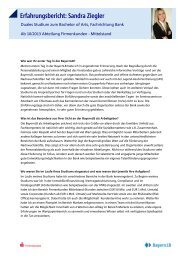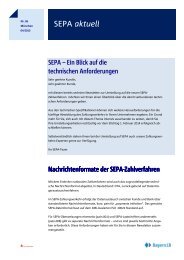A4 für Copyshop GB.indd - Bayerische Landesbank
A4 für Copyshop GB.indd - Bayerische Landesbank
A4 für Copyshop GB.indd - Bayerische Landesbank
Create successful ePaper yourself
Turn your PDF publications into a flip-book with our unique Google optimized e-Paper software.
106 Report on the Bank and the Group<br />
} Bank-wide<br />
controlling concept<br />
} Organisational<br />
basis of risk<br />
management and<br />
controlling<br />
Risk report<br />
Risk monitoring and control<br />
BayernLB employs uniform procedures to control and monitor its risks throughout all<br />
of its business areas. The global objective is to optimise the Bank’s risk / return profile<br />
for all of the various types of risk. Responsibility for risk identification, analysis and<br />
assessment lies with the Risk Office Support Operations, which is also charged with<br />
attending to, processing, monitoring and controlling risks on an ongoing basis.<br />
The organisational framework underlying the Bank’s risk controlling system takes into<br />
account the Minimum Requirements for the Credit Business of Credit Institutions (MaK)<br />
and the Minimum Requirements for the Trading Activities of Banks (MaH). During the<br />
period under review, this framework was developed further. Thus, in 2004, responsibil-<br />
ity for credit and collateral administration was delegated to the Risk Office Support<br />
Operations.<br />
Risk management principles are defined by the enhanced credit policy. This is supple-<br />
mented by the credit risk strategy and specific policies governing items such as risk<br />
provisioning.<br />
The credit risk strategy defines standards for credit business as well as regulations<br />
governing the Bank’s handling of credit and counterparty risks, on the basis of general<br />
legal and supervisory terms and conditions. In particular, it sets key parameters for the<br />
credit portfolio, and defines the Bank’s principles for risk capital controlling (focusing<br />
on risk / return aspects). The Board of Management reviews the credit risk strategy on<br />
a yearly basis.<br />
Economic capital, which is measured using economic benchmarks, is becoming increa-<br />
singly important for controlling and limitation purposes, as is the Value at Risk (VaR)<br />
model. VaR is a method used for quantifying the risk potential that is offset by the<br />
capital allocated for risk hedging in the risk capacity calculation.<br />
The risk potential arising from country, market and operational risks is calculated,<br />
limited and controlled using the VaR method. Up to now, counterparty risks were cont-<br />
rolled by limiting the risk assets provided and using the expected losses as a basis. At<br />
the same time, important experience was gathered within the context of pilot VaR cal-<br />
culation projects. In the future, the Bank will also employ the CreditRisk+ method to<br />
control counterparty risks. For this method, in line with its target rating, BayernLB<br />
assumes a confidence level of 99.96 percent (with a one-year holding period).<br />
From the beginning of 2005, the economically assessed risk capital requirement has<br />
been offset by the cover funds available as part of an ongoing monitoring process. This<br />
is initially being carried out as a test phase. A buffer determined by the Board of Man-<br />
agement helps to cover unusual market fluctuations (stress tests) and further risks that<br />
fall outside the scope of the concept.



